Ansible Alternatives Open Source
It is always better to look for Ansible Alternatives Open Source. Ansible stands as an open-source solution for IT automation, streamlining tasks like configuration management. It helps in deploying applications, provisioning cloud resources, executing ad-hoc tasks, automating networks, and orchestrating multi-node setups. Renowned for its user-friendly nature and agentless design, it negates the necessity for extra software on managed hosts.
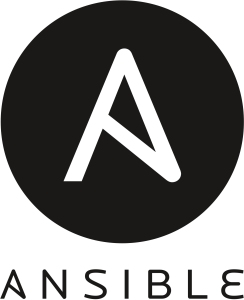
It finds extensive application in DevOps setups, empowering teams to enhance workflow efficiency, automate mundane activities, maintain uniform infrastructure, and manage resources effectively while minimizing human error.
Ansible Alternatives Open Source: 1. SaltStack
SaltStack, an open-source platform known for its ability in configuration management and orchestration, emerges as an essential solution for automating various tasks across infrastructures, all directed from a centralized command center.

Known as a powerful contender in IT automation alongside Ansible, SaltStack boasts a range of robust features and functionalities, catering to the complex demands of modern IT landscapes.
Key Attributes
- User-friendly Programming Interface: SaltStack offers an intuitive interface that simplifies the process of creating and managing automation tasks, making it accessible even to those with limited expertise.
- Extensive Library of Prebuilt Modules: With an extensive repository of prebuilt modules covering a diverse range of tasks, SaltStack empowers users to expedite automation workflows without the need for extensive custom scripting.
- Robust API for Seamless Integration: SaltStack provides a powerful API that facilitates seamless integration with an array of DevOps tools, enabling the creation of cohesive and interoperable automation pipelines.
- High Scalability: Designed to accommodate the dynamic needs of large-scale infrastructures, SaltStack exhibits remarkable scalability, allowing it to effortlessly handle the management of sprawling IT environments with ease.
Advantages
- Scalability: One of SaltStack’s standout features is its innate scalability, which enables it to efficiently manage the complexities of expansive infrastructures by horizontally scaling its resources as needed.
- Speed: Renowned for its swift execution speeds, SaltStack ensures rapid task completion and responsiveness to changes, thereby minimizing downtime and maximizing operational efficiency.
- Integration: SaltStack’s robust API facilitates seamless integration with a plethora of third-party tools and platforms, empowering organizations to construct comprehensive DevOps pipelines tailored to their unique requirements.
Disadvantages
- Resource Demands: While SaltStack’s scalability is a boon for managing large infrastructures, its master-slave architecture can impose significant resource demands, particularly as the infrastructure scales, necessitating careful resource allocation and management.
- Complexity: Despite its impressive capabilities, SaltStack may pose a steep learning curve for novice users due to its complexity and the absence of a vast community support ecosystem comparable to other popular DevOps tools.
- Security Concerns: Past instances of authentication vulnerabilities and zero-day exploits have underscored security challenges associated with SaltStack deployments. Securing SaltStack environments demands the implementation of robust zero-trust security measures and meticulous adherence to security best practices to mitigate potential risks effectively.
Ansible Alternatives Open Source: 2. Puppet
Puppet emerges as a cornerstone in the domain of Infrastructure as Code (IaC), offering an open-source solution meticulously tailored to orchestrate the intricate dance of infrastructure configuration and deployment through the lens of declarative coding paradigms.
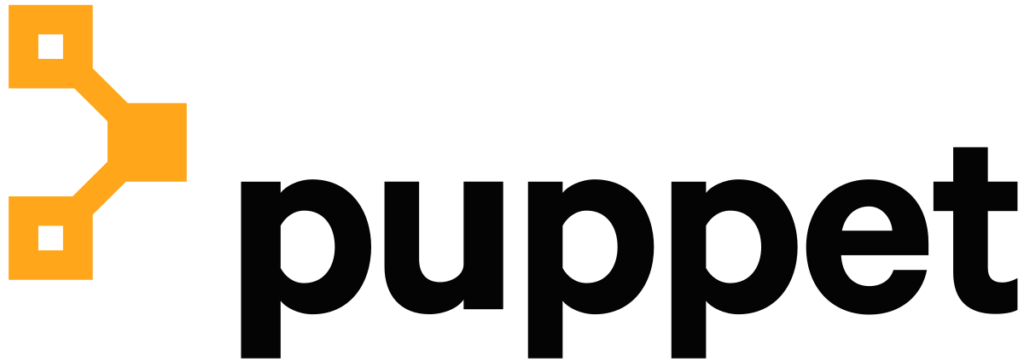
Its foundation rests upon an agent-based architecture, where meticulous attention is paid to the management of resource states, ensuring a harmonious alignment with the desired system configuration.
Puppet, heralded as the foremost contender in the landscape of web-based, Windows, Mac, and Linux environments, presents a formidable alternative to Ansible, resonating particularly with users seeking a robust and comprehensive automation solution.
Pros
- Firstly, resource-Oriented Management: Puppet distinguishes itself with its prowess in overseeing a diverse spectrum of system components. This reanges from essential packages and crucial services to intricate files and user configurations, thereby simplifying the often convoluted process of system configuration.
- Vast Module Repository: The expansive library of reusable modules and manifests hosted on Puppet Forge stands as a testament to the vibrancy of Puppet’s community. This treasure trove of pre-built resources, meticulously crafted and generously contributed by an engaged community, empowers users with unparalleled flexibility and efficiency in resource management.
- Finally, comprehensive Auditing and Reporting: Puppet’s arsenal includes a suite of robust features dedicated to auditing and reporting, equipping users with the tools necessary to vigilantly monitor, meticulously troubleshoot, and diligently maintain system integrity and compliance standards.
Cons
- Firstly, steep Learning Curve: Delving into the depths of Puppet’s declarative language (Puppet DSL) and embracing its resource-centric methodology demands a significant investment of time and intellectual effort. Mastery of these intricacies necessitates a steadfast commitment to learning and adaptation.
- Complexity: The adoption of an agent-based architecture introduces a layer of complexity into Puppet’s deployment landscape. Successful implementation mandates meticulous planning, including the careful orchestration of infrastructure setup, management of dependencies, and establishment of robust communication channels, thereby adding layers of intricacy to the deployment process.
- Finally, community-driven Limitations: While Puppet thrives within its vibrant community ecosystem, certain niche use cases may encounter roadblocks due to the absence of readily available modules and resources. While mainstream technologies enjoy robust support, less ubiquitous tools may face resource scarcity, challenging users to navigate these limitations with ingenuity and resourcefulness.
Ansible Alternatives Open Source: 3. Chef
Chef emerges as a cornerstone within the domain of Infrastructure as Code (IaC). It presents a high-end crafted framework set up to automate and streamline the intricate processes of IT infrastructure configuration and maintenance across a spectrum of scales. This might range from small-scale setups to expansive enterprise environments.
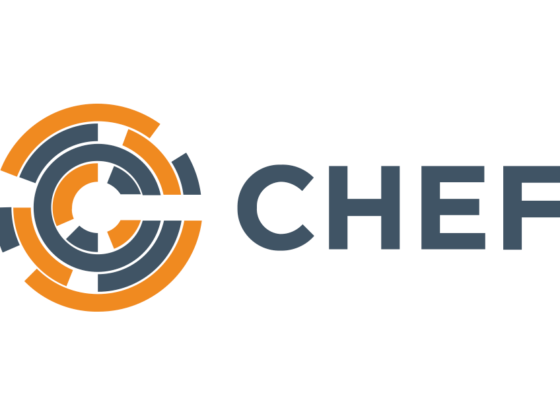
Known as a pivotal DevOps tool, Chef garners accolades for its remarkable capacity to accelerate operational agility, enhance scalability, and foster consistency in the management of IT infrastructure.
Operating within the dynamic landscape of cloud computing, Chef embraces a cloud-native ethos, providing a versatile platform that adeptly simplifies complex operations and empowers effective automation at scale.
Key Attributes
- Firstly, Aallowing Cloud Adoption: At the forefront of cloud-native automation, Chef serves as a catalyst in expediting the adoption and integration of cloud technologies, enabling organizations to seamlessly harness the power of cloud environments for enhanced agility and scalability.
- Robust Data Center Management: With its comprehensive suite of features and capabilities, Chef empowers administrators with the tools necessary to effectively govern and manage data centers, ensuring optimal performance, reliability, and resource utilization across diverse infrastructures.
- After that, multi-Cloud Management Capabilities: Chef’s versatile architecture extends its reach across multiple cloud environments, providing centralized management and control for organizations operating in hybrid or multi-cloud environments, thereby facilitating streamlined operations and resource allocation.
- Finally, ensuring High Availability: Recognizing the paramount importance of continuous availability, Chef prioritizes the implementation of robust mechanisms to ensure the resilience and availability of critical infrastructure components, thereby minimizing downtime and maximizing operational continuity.
Pros
- Flexibility: Chef’s rich ecosystem of customizable recipes and cookbooks empowers administrators with unparalleled flexibility to tailor system configurations with precision, catering to the unique requirements and use cases of diverse environments.
- Code-Based Infrastructure Management: Embracing the principles of Infrastructure as Code (IaC), Chef minimizes the risk of manual errors and introduces a higher degree of automation, consistency, and reproducibility into infrastructure management workflows, thereby enhancing operational efficiency and reliability.
- Scalability: Engineered to accommodate the complexities of large-scale infrastructures, Chef boasts horizontal scalability and a distributed architecture, enabling organizations to seamlessly scale their automation efforts to meet evolving business demands with ease and efficiency.
Cons
- Complexity in Setup: The configuration and setup of the Chef server and client nodes may introduce additional complexity compared to agentless alternatives, necessitating meticulous planning and configuration to ensure efficient communication and coordination between components.
- Performance Considerations: Achieving optimal performance with Chef may require significant resource allocation and optimization efforts, particularly in resource-intensive environments, where careful consideration must be given to resource utilization and performance tuning to ensure smooth implementation and operation.
- Steep Learning Curve: Mastering Chef’s utilization of Ruby DSL and advanced features may present a steep learning curve for administrators and operators, requiring additional investment in training, research, and expertise to leverage its full potential effectively in production environments.
Ansible Alternatives Open Source: 4. Jenkins
Jenkins emerges as a cornerstone in the realm of software development, revered as an open-source continuous integration tool meticulously crafted in Java.
Its primary mission is to empower developers by providing a robust platform for swiftly identifying and rectifying defects within their codebase through real-time testing and comprehensive reporting on incremental changes.

Notably akin to Ansible, Jenkins excels in automating the crucial testing phase of software builds, thereby elevating the efficiency and reliability of the development lifecycle. It is a stalwart in the realm of Continuous Integration and Continuous Deployment (CI/CD). Jenkins finds common application in automating the multifaceted workflows involved in application building, testing, and deployment.
Distinguishing itself from Ansible, Jenkins adopts a master-slave architecture, enabling the seamless execution of tasks on remote machines with precision and efficiency.
Key Attributes
- Firstly, scalability: Jenkins stands tall with scalability as one of its cornerstone features, adeptly catering to the intricate demands of large-scale projects and enterprise-grade environments. Its scalable architecture ensures that it remains performant and efficient even in the face of escalating workloads and growing complexities.
- Cross-Platform Compatibility: Jenkins prides itself on its cross-platform compatibility. This will offer developers the flexibility to seamlessly integrate it into diverse development environments. THis is irrespective of the underlying technology stack.
- Easy Installation: Jenkins simplifies the often daunting task of installation and configuration,
Whether it’s web applications, mobile apps, or enterprise software, Jenkins seamlessly integrates into the development pipeline, ensuring consistent and reliable results across platforms. - Easy Installation: Jenkins simplifies the often daunting task of installation and configuration. This will provide developers with an intuitive setup process that minimizes downtime and accelerates time-to-value. With Jenkins, developers can swiftly set up and configure the platform, allowing them to focus their efforts on more critical tasks at hand.
- Web-Based Configuration: Jenkins revolutionizes the configuration process through its intuitive web-based interface. This allows developers to effortlessly customize and tailor the platform to suit their specific requirements.
- Easy Installation: Jenkins simplifies the often daunting task of installation and configuration,
With just a few clicks, developers can configure pipelines, set up build jobs, and monitor the entire development process from anywhere with an internet connection. - Finally, distributed Builds: Leveraging a distributed architecture, Jenkins facilitates distributed builds. This will enable the parallel execution of tasks across multiple machines for enhanced efficiency and speed.
By distributing workloads across multiple nodes, Jenkins ensures optimal resource utilization and reduces build times, thereby accelerating the development lifecycle.
Pros
- Extensibility: Jenkins boasts an extensive array of integrations and plugins, offering developers unparalleled flexibility to extend functionality. It will allow easily integrate with other DevOps tools. Whether it’s version control systems, issue trackers, or deployment platforms, Jenkins has a plugin for virtually every need. This will ensure that developers can tailor the platform to meet their unique requirements effortlessly.
- Open Source: As an open-source platform, Jenkins stands as a beacon of freedom and flexibility. This will provide organizations with a cost-effective solution for their CI/CD needs. Its open nature fosters collaboration and innovation, allowing developers to contribute code, and share best practices. It can let you collaborate with a vibrant community of like-minded individuals.
- Scalability: Jenkins’ horizontal scalability ensures that it remains performant and efficient even in the face of escalating workloads and growing complexities. Its distributed architecture enables it to scale seamlessly across multiple nodes. This will ensure that it can handle the demands of even the most demanding development environments with ease.
Cons
- Resource Intensiveness: While Jenkins excels in scalability, the execution of multiple or large builds within Jenkins can impose significant resource demands. This might potentially impact performance and necessitate substantial resource allocation to ensure optimal operation.
Organizations must carefully monitor resource usage and allocate resources judiciously to prevent performance bottlenecks and ensure smooth operation.
- Security Considerations: Jenkins requires meticulous attention to security setup and configuration to mitigate the risk of misconfigurations. This could potentially lead to security vulnerabilities and data breaches.
Organizations must implement robust security practices and protocols to safeguard their Jenkins instances and protect sensitive data.
- Learning Curve: Jenkins simplifies the setup of basic pipelines. Mastering its advanced features and configurations may entail a considerable learning curve. It will demand time and effort from developers.
Organizations must invest in training and education to ensure that their teams are equipped with the skills and knowledge. This is the only way to harness the full power of Jenkins effectively.
Ansible Alternatives Open Source: 5. Rudder
Rudder emerges as a potent open-source automation solution meticulously crafted to optimize the management of IT infrastructure and configurations. This will empower teams to effectively oversee large-scale IT environments from a centralized hub.
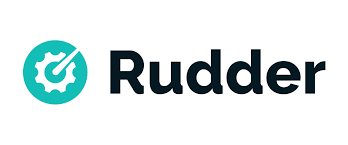
Its a user-friendly, web-driven interface that facilitates the automation of IT tasks and ensures adherence to compliance standards across systems. In contrast to Ansible, Rudder adopts an agent-based architecture and boasts a visually intuitive web interface for streamlined management.
Key Attributes
- Firstly, flexible Workflow: Rudder offers a versatile workflow that adapts to the dynamic needs of the modern IT environment. This will allow teams to orchestrate complex tasks with ease and efficiency.
- Secondly, automation: At the core of Rudder’s functionality lies robust automation capabilities. This will empower organizations to automate repetitive tasks and streamline operational workflows for enhanced productivity and efficiency.
- Continuous Enforcement: Rudder facilitates continuous enforcement of policies and regulations, ensuring ongoing compliance with industry standards and organizational requirements.
- Comprehensive Inventory: With its comprehensive inventory management features, Rudder provides organizations with real-time visibility into their IT assets. This will allow effective resource allocation and management.
- Finally, web-Based Management: Rudder’s intuitive web-based management interface simplifies configuration management and automation tasks. This will allow users to easily manage configurations, monitor systems, and track changes through a user-friendly UI.
Pros
- Firstly, compliance: Rudder’s built-in compliance monitoring capabilities empower organizations to enforce policies and security regulations effectively. This will manage risks and ensure adherence to industry best practices.
- Centralized Management: Rudder’s centralized model promotes consistency in configuration and management across distributed systems. It will streamline operations and reduce the risk of configuration drift.
- Finally, user-Friendly Interface: The web-based interface enhances usability and accessibility. It will simplify configuration management and automation tasks for users of all skill levels.
Cons
- Limited Flexibility: Rudder’s primary focus on infrastructure configuration and compliance may limit its versatility compared to more multifaceted automation tools. This will potentially restricting its suitability for certain use cases.
- Secondly, dependencies: The agent-based architecture of Rudder introduces dependencies between the central server and nodes. This will require ongoing management and potentially lead to performance issues related to agent installation and connectivity challenges.
- Finally, community Support: Rudder may have fewer resources, modules, and community-driven enhancements compared to other automation tools. This will potentially limit its extensibility and support options.
Ansible Alternatives Open Source: 6. CFEngine
CFEngine emerges as a robust open-source framework meticulously engineered for the secure management of mission-critical IT infrastructure. This will offer a potent combination of configuration management and automation capabilities.
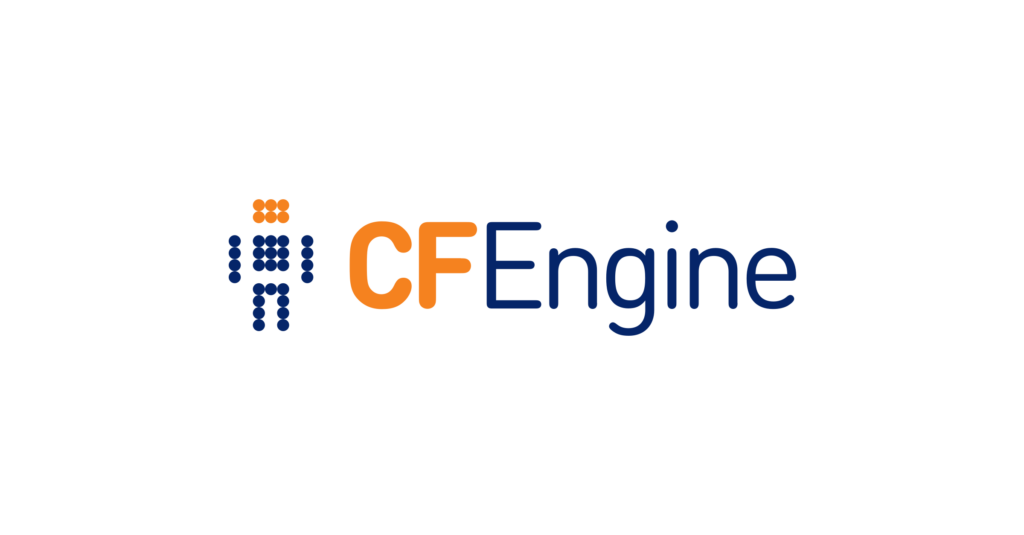
Tailored specifically for the maintenance of large-scale IT environments, CFEngine serves as a stalwart guardian. This process ensures compliance and consistency across distributed systems through its powerful automation features.
Central to its operation is an agent-based architecture that enables continuous assessment of the system’s current state against predefined configurations. This allows proactive maintenance and compliance enforcement.
Key Attributes
- Firstly, rapid Execution: CFEngine distinguishes itself with rapid execution capabilities. This allows organizations to swiftly enact changes and enforce configurations across vast IT infrastructures with unparalleled speed and efficiency.
- Unmatched Security: With a steadfast focus on security, CFEngine empowers organizations to uphold compliance standards. It can mitigate risks by proactively identifying them. It can also address configuration discrepancies in real time.
- After that, large-Scale Compliance: CFEngine excels in managing large-scale compliance initiatives. It will enable organizations to effortlessly maintain regulatory compliance and adherence to industry standards across diverse and distributed systems.
- Finally, massive Deployment Capabilities: CFEngine’s deployment capabilities are unparalleled. This will allow organizations to orchestrate massive deployments seamlessly and efficiently. And it will ensure uniformity and consistency across their IT landscape.
Pros
- Firstly, real-Time Monitoring: CFEngine provides real-time insights into system states, enabling organizations to detect and address configuration inconsistencies promptly. This will allow to minimize downtime and enhance operational resilience.
- Self-Healing Capabilities: CFEngine boasts self-healing capabilities that autonomously correct configuration issues to align systems with the desired state. This will comply and minimize manual intervention.
- Finally, focus on Security: CFEngine prioritizes security and compliance enforcement. This will allow users to define actions that effectively manage non-compliance and mitigate security risks in real-time.
Cons
- Limited Modules: CFEngine’s modules library may exhibit limitations, necessitating additional development efforts to address specific use cases and requirements.
- Complexity: Policy development in CFEngine requires a profound understanding of the platform’s concepts and syntax. Crafting intricate configurations may demand more complex policies compared to other automation tools. This will potentially add to the complexity of implementation and maintenance.
- Finally, steep Learning Curve: CFEngine presents a significant learning curve for administrators unfamiliar with the platform. Its platform-specific language and policy-driven approach demand substantial investments of time and effort to master effectively. This will potentially be posing challenges for organizations seeking rapid adoption and implementation.
[Want to learn more on custom software development? Click here to reach us.]
Conclusion
Organizations are exploring alternatives to Ansible. This article delves into open-source tools offering unique capabilities. SaltStack stands out for its scalability and extensive module ecosystem. At the same time, Puppet’s declarative approach and vast library of reusable modules make it a compelling choice. Chef’s flexibility and user-friendly interface appeal to DevOps teams, and specialized solutions like Rudder and CFEngine cater to specific needs.
Moreover, Bobcares offers software development support services, providing access to advanced features and expert guidance for optimizing automation workflows. With Bobcares’ assistance, organizations can harness the full potential of these open-source alternatives. This will ensure seamless integration and efficient management of their IT infrastructure.
Embracing these alternatives and leveraging expert support can empower organizations to stay ahead in the dynamic landscape of IT automation. This will help them drive efficiency, and achieve their business objectives with confidence.







0 Comments